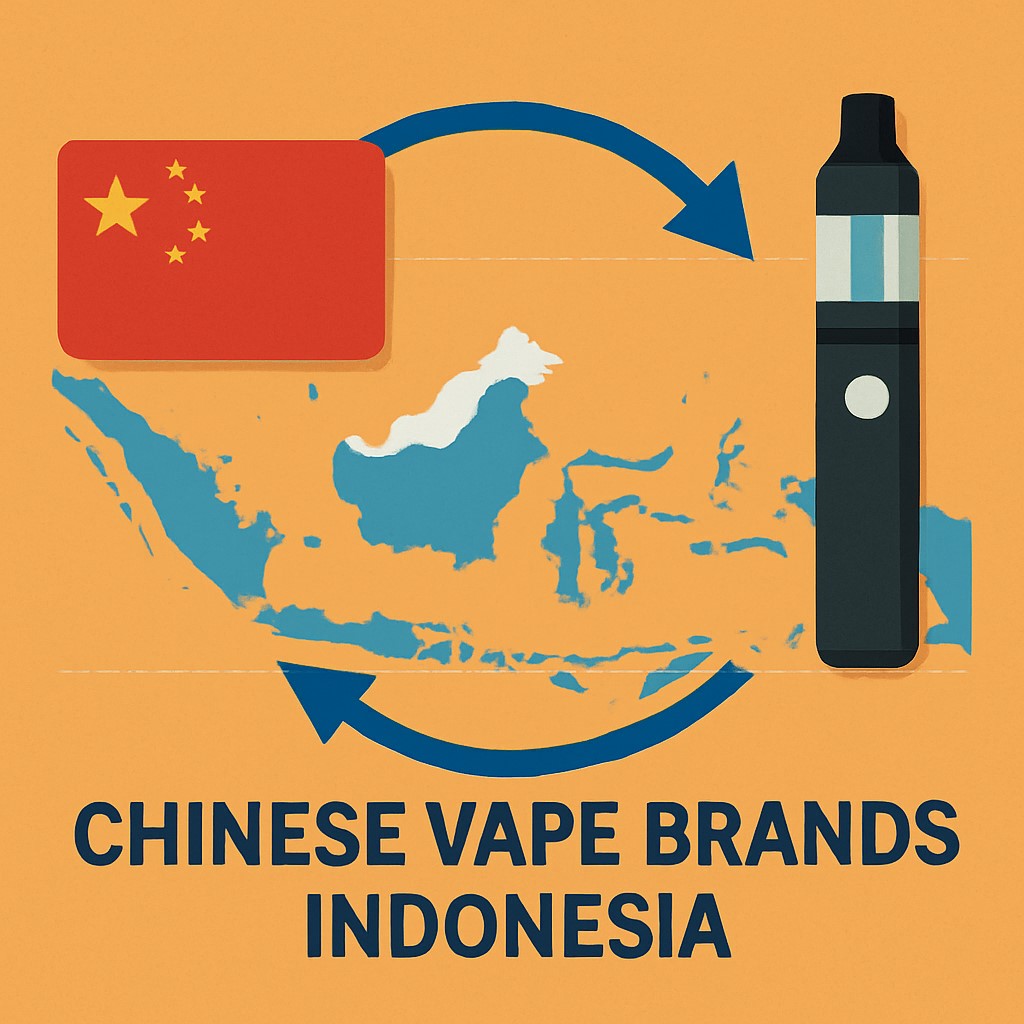Indonesia, a Southeast Asian giant with over 270 million people, a significant Gen Z population, and clear consumer upgrade trends, is undoubtedly a key target market for Chinese vape brands expanding overseas. It harbors a vast potential user base and boasts a relatively well-defined regulatory framework for electronic cigarettes.
However, reality has dampened expectations for many Chinese brands: despite seemingly “clear channel dynamics and policy direction,” achieving genuine “localization and deep roots” in Indonesia proves extremely challenging.
The underlying obstacles extend far beyond mere channel expansion and policy adaptation. Deeper issues lie in insufficient understanding of local culture, difficulties in building brand trust, inappropriate resource allocation models, and a lack of localized operational capabilities.
Channels remain a formidable challenge to crack. What are the root causes, and how can they be overcome?
I. Current Landscape and Challenges in the Indonesian Market
1. Channel Dominance Far Outweighs Brand Power:
Local distributors have a significant influence on the Indonesian vape market. Channel partners are highly selective, favoring brands that already possess market traction and high consumer acceptance. For example:
- OXVA has successfully captured consumer mindshare through precise product positioning and sustained marketing investment.
- FOOM, as a local brand, benefits from long-established local user loyalty and a well-developed distribution network.
New market entrants face significant hurdles in gaining channel favor unless they can directly drive consumer traffic or possess substantial brand pull.
2. Gen Z Drives Consumption, Religion & Culture Exert Profound Influence:
As the world’s largest Muslim-majority country, religious beliefs significantly shape lifestyles in Indonesia. Brands must meticulously navigate cultural sensitivities in their communication while simultaneously appealing to Gen Z’s desire for “cool, fun, and relatable” products and messaging.
3. Strong Local E-Liquid Brands Hold Sway:
Indonesia has several established local e-liquid manufacturers. These have formed strong, synergistic partnerships with hardware suppliers, creating sticky “device + e-liquid” bundle ecosystems. New brands entering with closed-system or prefilled products face considerable resistance in disrupting these existing collaborations.
II. Key Pathways to Successful Market Entry in Indonesia
1. Start with Product Definition – Tailor for Indonesian Gen Z:
Gen Z consumers favor “trendy, personalized, and socially engaging” products. Prioritize the following in product development:
- “Simplicity + Quality” resonates more than “feature overload.”
- Indonesian purchasing power is limited; avoid launching high-premium, overly complex devices.
- Gen Z is highly brand-conscious; attributes like “aesthetics,” “portability,” and “lifestyle accessory appeal” are major advantages.
2. Build a Localized, Collaborative Team:
To truly integrate, Chinese brands need to establish an in-country team covering “Marketing + Sales + Content + Operations”:
- Partner with local content creators and Gen Z community KOLs.
- Invest in a TikTok, Instagram, and WhatsApp marketing matrix to drive viral exposure.
- Hire local young talent to build trust with users and channel partners.
3. Adopt a “Targeted Channel Entry” Approach, Building Showcase Cases:
Given the caution of major distributors, new brands should employ a “showcase market” strategy:
- Establish beachheads in secondary cities like Surabaya, Yogyakarta, or Medan.
- Collaborate with mid-sized e-liquid brands to co-develop custom bundles.
- Secure 1-2 key channel KOLs, leveraging short-video content seeding and in-store conversion tactics to create a seamless “awareness to purchase” loop.
III. Strategies for Chinese Brands to Leverage Indonesian Channels
Indonesian channel partners focus less on “how impressive your factory is” and more on:
“Can you make it easy for me to sell your product?”
Specific Recommendations:
a. Generate Initial Buzz via Community & Online Content:
Target Gen Z users as the core audience for dissemination, prompting them to actively inquire about your product at retail points.
b. Implement “Brand Incubation” in Select Regional Stores:
Adopt a fast-moving consumer goods (FMCG) approach by building a “showcase market” first, avoiding a nationwide rollout initially.
c. Deploy a Combined Strategy: Sales Support + POSM + KOL Collaboration:
This is not about indiscriminate spending, but precise empowerment. Provide stores with concrete operational playbooks and support.
Conclusion
Indonesia is not a market lacking opportunity; it is a market demanding respect for local dynamics, a measured pace, and gradual penetration. Chinese brands must move beyond reliance on “price + OEM” models and embrace new approaches centered on local content, local partnerships, and local experiences.
While Indonesia’s regulatory environment is relatively favorable, Chinese brands aiming for genuine market entry and channel leverage must transcend the role of mere “product suppliers” and transform into “brand operators” deeply rooted in local culture and operations. Only through a profound understanding of Indonesian consumers’ cultural needs and social ecosystems, by building differentiated and compliant product systems, and leveraging content-driven strategies coupled with local channel collaboration, can brands secure a sustainable position in Indonesia’s vast and complex market.

